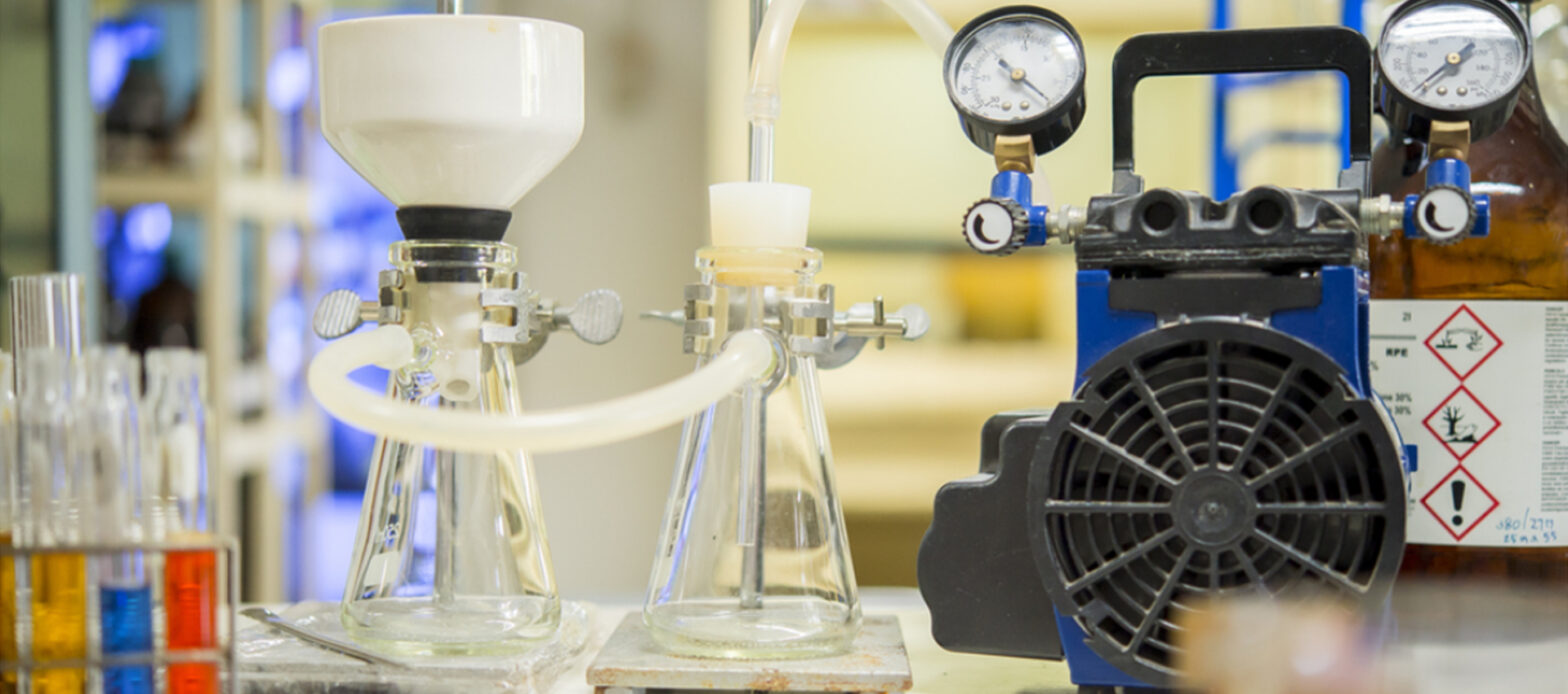
One of the most discreet of all lab tools-vacuum pumps, serve a variety of purposes in scientific research. Vacuum pumps reduce the boiling point of the solution thereby reducing the pressure of the system. As the boiling point comes down, the solution evaporates at a lower temperature thus decreasing the sample degradation.
There are several vacuum pump solutions used in labs, namely:
One of the most common and the cheapest vacuum pumps available, the rotary vane pumps are used in reduction of dry gas or continuous suction. They can also be used in the atmosphere by the scientists.
As the name suggests, this type of pump uses a rotating piston which shifts the diaphragm to carry out the traction. These pumps need oil to operate. Diaphragm Vacuum Pumps are most frequently employed in functions like liquid degassing, filtration, backing pumps etc.
These pumps are a combination of rotary cane and diaphragm vacuum pumps. They are used mainly in heavy duty activities involving harsh chemicals.
Scroll pumps are dry pumps requiring less maintenance. They don’t need oil to operate and function with little or no noise.
Some of the common uses of vacuum pumps are listed below:
Enumerated below are some of the factors applied in choosing the vacuum pump according to a specific requirement:
Oil free pumps are the most common type of lab vacuum pumps that use a dry lubricant instead of oil. Then the Rotary Vane Vacuum Pumps are oil sealed and are used in several applications in the lab. Lastly, Water Aspirants require a continuous flow of water. These are easy to operate and very cost-effective.
There are 2 models of the pumps-Max Vacuum and Max Flow Rate. The Max vacuum is the lowest pressure that a lab vacuum can pick up. Besides that, the Max flow rate, also known as pumping speed, is the maximum rate at which the lab vacuum pump can evacuate vapours.
It is the mechanical energy used by the vacuum pump. The Rotary Vane Pumps typically utilise 1/2 to 1/3 hp.
The motor speed measured in revolutions per minute varies between 1275-1750 rpm.
The operational noise produced by the vacuum pump measured in decibels determines the noise levels. The oil free pumps produce noise in the range of 50-68 dBs while the water aspirants produce no noise as they don’t have a motor.
Vacuum pumps typically weigh between 4-14 kgs.
The inner diameter of the hose barbs ranges from 8-10mm.
The needs of the application dictate the choice of the vacuum pump to be employed above all else. Most manufactures of lab vacuum pumps offer a variety of pump types to fit into your needs as a user. It is pertinent to choose the correct pump to suit your needs as the proper vacuum pump can enhance the productivity in your lab and help you achieve your scientific objectives with a high degree of reliability.